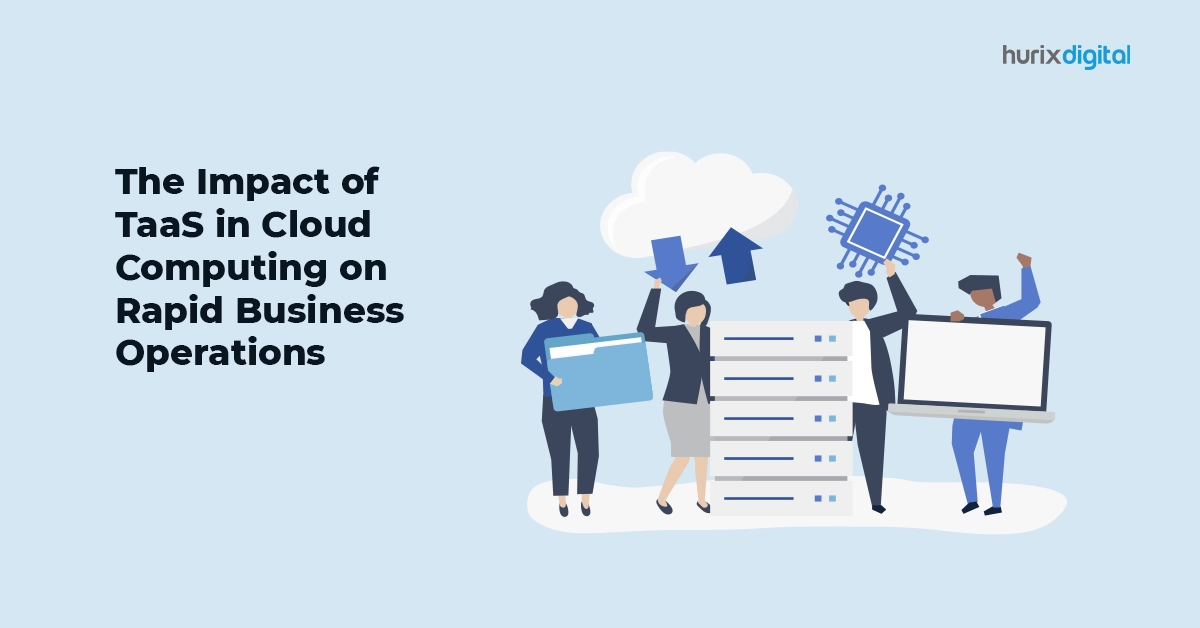The Impact of TaaS in Cloud Computing on Rapid Business Operations
Forget slow-moving business growth. TaaS is here to hit the fast-forward button.
With the ability to rapidly provision infrastructure on demand, companies can launch new products and scale to meet customer needs faster than ever before. But speed should never come at the cost of quality. This is where Testing as a Service (TaaS) becomes a critical component of agile cloud operations.
TaaS (Testing as a Service) provides several key benefits for businesses and organizations looking to improve their software testing and quality assurance processes. Let’s see how.
Table of Contents:
- Testing as a Service (TaaS) – A Brief Overview
- How Does TaaS in Cloud Computing Lead to an Accelerated Cycle of Innovation?
- Taas Use Cases with Impact on Business Operations
- 4 Best Practices To Adopt While Deploying TaaS
- Wrapping Up
Testing as a Service (TaaS) – A Brief Overview
TaaS provides on-demand testing environments and automation tools via the cloud.
Instead of building out their testing labs, companies can spin up virtual testing environments in minutes and pay only for what they use. This allows for rapid iteration and flexible scaling of test environments. TaaS also offers pre-built test automation to reduce the time and effort of repetitive tests.
The on-demand nature of the TaaS service supports greater innovation as well. Companies can rapidly test and prototype new ideas without lengthy procurement processes. If the application is successful, additional resources can be deployed quickly to support wider rollout.
If not, companies do not have to worry about being stuck with unused servers. With TaaS, organizations have the agility to respond faster to opportunities, which is key for competitive advantage.
How Does TaaS in Cloud Computing Lead to an Accelerated Cycle of Innovation?
TaaS enables businesses to deliver high-quality software testing quickly by:
- Enabling on-demand provisioning of test environments ensures that businesses can swiftly create and deploy the required infrastructure with the help of a technology platform as and when needed. This capability allows for agility in setting up diverse testing environments to meet specific project requirements, ultimately contributing to faster and more efficient testing processes.
- Providing scalable test automation empowers businesses to conduct testing seamlessly across different stages of the software development lifecycle. This scalability allows for the automation of various testing tasks, from unit testing to integration and acceptance testing, ensuring that testing services can adapt to the evolving needs of the project.
- Integrating testing into continuous delivery workflows involves the seamless inclusion of testing processes within the overall development and deployment pipeline. By integrating testing into continuous delivery, businesses can ensure that each code change is rigorously tested, leading to higher-quality software and reduced time-to-market.
- Accelerating release cycles without compromising quality enables businesses to swiftly introduce software updates and new features while maintaining high standards of quality. This accelerated release cycle is achieved through efficient testing practices, enabling businesses to respond rapidly to market demands and stay ahead of the competition.
- Optimizing test data management involves ensuring that the test data utilized is relevant, accurate, and efficiently managed throughout the testing process. Effective test data management contributes to the reliability and validity of test results, ultimately enhancing the overall quality of the software being developed.
TaaS Use Cases with Impact on Business Operations
The self-service and automated nature of TaaS architecture allows resources to be delivered on-demand in a scalable way. Users can request pre-configured services without needing involvement from IT teams. This agility and flexibility support rapid business operations.
Companies across many industries are adopting TaaS models to rapidly scale their business operations and accelerate time-to-market. Here are some examples:
1. E-Commerce
During peak sales events, e-commerce sites like Amazon and eBay leverage TaaS to instantly procure extra cloud servers and bandwidth to smoothly manage spikes in traffic and orders. This ensures excellent customer experience.
2. Media
Media companies like Netflix tap into TaaS for on-demand content delivery networks to offer superior streaming experiences worldwide. TaaS allows for meeting viewership growth and new market demand rapidly.
Also Read: Why Tech-as-a-Service (TaaS) is Gaining Popularity over the Traditional Approach?
4 Best Practices To Adopt While Deploying TaaS
Overall, a measured approach is recommended when adopting any new technology. TaaS provides agility, but scaling too quickly can lead to unexpected costs or performance issues.
Adopting TaaS methodically allows businesses to fully reap the benefits while minimizing risks:
- While using TaaS, it’s important to start small and scale up gradually. Begin by identifying one or two use cases that are well-suited for TaaS and pilot them before expanding more broadly. This allows time to evaluate performance, costs, and benefits before fully transitioning.
- Carefully monitoring usage and costs is also critical. TaaS pricing is often based on metrics like storage consumed or tasks performed. Costs can add up quickly if usage grows unchecked. Put budget alerts in place to notify if spending exceeds projections. Continuously optimize how applications utilize TaaS resources to avoid waste.
- Periodically analyze which tasks and workflows are using TaaS versus those still on legacy infrastructure. Shift more to TaaS if it proves cost-effective for additional use cases. But maintain legacy systems for workloads that aren’t optimized for TaaS.
- Leverage TaaS automation and self-service features to maximize efficiency. Automating provisioning, deployment, scaling, and management of resources reduces the burden on IT teams. Make sure developers can spin up test and staging environments quickly without manual intervention.
Also Read: The Revolution of AI in Cloud Computing: Transforming Education and Work
Wrapping Up
The availability of computing resources through TaaS substantially impacts business operations. The technology enables organizations to be nimble, efficient, and creative.
TaaS in cloud computing is a strategic asset for competing and adapting in fast-changing markets. By leveraging TaaS, companies can achieve rapid time-to-market, reduce costs, and keep innovating – positioning themselves for growth and success.
Hurix Digital’s promise of business agility in the cloud cannot be realized without an effective quality assurance strategy. TaaS provides the infrastructure and automation for fast-moving companies to test early, test often, and meet customer expectations.
Get in touch with Hurix Digital to learn more!

SVP & Head – Hurix Technology Solutions
Global Delivery head with 25 years of working experience in NYC investment banks and fintech companies. Hands-on technology delivery management and program management, accountable for stakeholder relationships, Strategic roadmap, P&L, Revenue growth, Account Management, and employee satisfaction.









